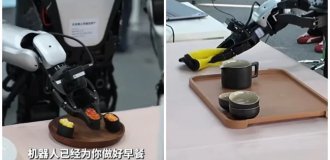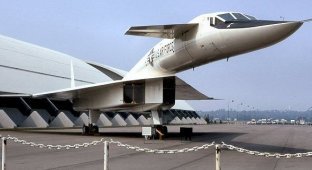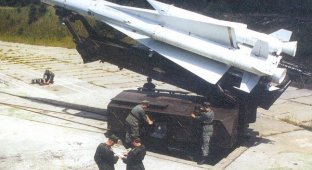Museum of the Strategic Missile Forces (Strategic Missile Forces) (10 photos)
Excursion to a very interesting museum of strategic missile forces, which is located in Ukraine on the border of the Nikolaev and Kirovograd regions.

I learned about it last fall and could not deny myself the pleasure of visiting a place that until recently had been strictly classified and, moreover, was one of the examples of the most powerful modern weapons.
I will not fully describe the exhibition, but will only give facts that I remember and found interesting. A photo gallery and information on the exhibition and history of the Strategic Missile Forces is available on the museum’s website.
After Ukraine adopted a nuclear-free status, in the late nineties and early two thousand, the missile launchers were completely disarmed and disabled. In October 2001, the last mine installation was destroyed. A museum was created on the site of one of the central combat starting positions.

The silos have been destroyed, the missiles have been dismantled, but all auxiliary equipment is in working order and carefully preserved. By the way, most of the employees of this museum are former missile officers who themselves served at this or similar bases. Therefore, you receive all the information on the excursion from eyewitnesses and participants in the events.
The museum, as I already said, is located on the territory of the central launch position, where there was a command post and one launcher. There were also barracks here for a small number of guards. One central position controlled approximately ten launchers, which were located several kilometers apart. There was no one at the remaining launchers; these were classified, conspiratorial structures without obvious signs of a missile silo. Judging by the maps, there were ten such groups of launchers around the city of Pervomaisk, which were part of the 46th Nizhnedneprovskaya Missile Order of the October Revolution Red Banner Division.

RS-22A (SS-24 “Scalpel”) missiles were located here.
The command post itself is located in a fenced area, where there were several security perimeters - a barbed wire fence, a minefield, an electric fence. And, of course, security with small arms. It was possible to get to the command post through an underground passage - a passage at a depth of 3 meters with a length of about a hundred meters.

First you get into the refrigeration unit room, then along another turn to the command post shaft itself. The command post itself is a vertical cylinder with a diameter of 4 meters, fixed in a shaft 45 meters deep. The cylinder does not touch the walls directly, but is supported by special shock absorbers. This is done in order to withstand the strong shaking of the ground after a possible bomb impact.

The command post could operate in a fully autonomous mode for 45 days while maintaining the necessary conditions and generating electricity. The command compartment itself is located on the eleventh level - the second from the bottom. It contains three officers' work stations. In the twelfth compartment there is a rest room. All the compartments above have a technical purpose - electronic equipment and life support systems were located there.
To get inside, you had to contact the command post using a special phone number and inform them of your admission in a special code, then enter the code combination on the massive door. After that you get into the elevator, which drops to the twelfth level.
The command post has two combat posts. Starting is possible only by simultaneously turning the key and pressing the button on both posts. That is, the action of two people is necessary. You must first enter the launch code into the installation, which was transmitted immediately before the missiles were launched. By the way, the notorious “red button” is gray.

The launch command could come in different ways - either via special radio or telephone communication channels or via a regular broadcast television channel. In general, there were much more than one way to launch a rocket - from a combat post, manually directly from a rocket silo, remotely via radio or from a satellite. There are regular and satellite antennas next to the launcher itself.

The launch shaft itself is located at a distance of several tens of meters from the command post shaft. The shaft is closed from above with a powerful hatch that can open in a matter of seconds.

The museum is constantly expanding; there are many samples of weapons and rocket technology - parts of engines, hulls. You can stroke the largest ballistic missile with your hand, which struck terror into all “probable” opponents - the RS-20A (SS-18) “Satan”.
























